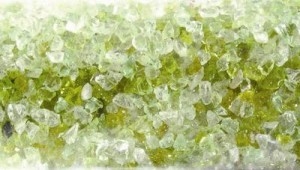Glass VS Sand filter media

The glass filtration was first introduced in the late 1990s, is catching on as a direct alternative to sand.
The glass filtration was first introduced in the late 1990s, is catching on as a direct alternative to sand.
Glass filtration is the product not only of the industry’s never-ending search for the best media, but also the generous supply of recycled glass. The majority of recycling programs do not separate bottles by color, so when the glass is crushed, the result is a mix of brown, green and clear shards called cullet. Most beverage companies won’t use cullet for new bottles because, they want pretty bottles.
That leaves scrap glass to a limited market, which makes it perfect alternative to sand for the pool industry.
The concept of Sand Filter:
Solid turbid particles become lodged into the sand bed. As more dirt is captured in the sand bed, it becomes capable of filtering finer and finer particulate, up to a point.
In order for the filter to be effective, each grain of sand must be roughly the same size, generally 0.4 to 0.6 millimeters. The most common sand filter media is 20-grade silica, which creates a mesh so tight it can sieve particles as small as 20 microns.
Cons:
Sand can clump, calcify and create channels where water slips through unfiltered. In commercial settings, it needs to be backwashed frequently — at least once a week for large-volume public pools. The filtration takes place through the top 6 inches, where the gunk builds up. It’s recommended to be replaced every five to eight years, as the grains eventually breakdown.
The concept of Glass Filter:
Glass has a slight negative charge on the surface to attract fine particles, which cling to the media like static-charged socks to a sweater. This weak charge releases the particles upon backwashing for a more efficient cleansing. This is because glass, which is less dense than sand, doesn’t pack as tight. Proponents also say glass has a tighter turbid catch, with an ability to filter down to 9 microns. Some brand claims go as low as 3 microns. This DE-quality filtration can be achieved without chloramine-producing flocculants and shock treatments, says one manufacturer, which is one reason glass is most commonly found at indoor pools where air quality is a top concern.
It is said to last 10 years or longer. Many cases techs find that it only needs to be cleaned with chlorine or acid, and topped off with a fresh layer.
Glass is more resistance to breakdown through filtration backwashing cycles, which minimizes cracks where bacteria can lodge and resist flushing in backwashing.
Cons:
3-40% more expensive
Research
A Washington state nonprofit put this to the test. In a field study performed by the Clean Washington Center, researchers replaced 1,950 pounds of sand from three high-rate filters with recycled glass and analyzed the results for approximately nine months. Here’s what they found:
- Less water: The average duration of backwashing (in minutes) was 2:34 compared to 3:21 for sand. That’s equates to a 23-percent reduction in water. The improved performance can be attributed to glass’ lower density, with approximately 20 percent less volume by weight than sand. The lighter material floats more easily, the study noted, allowing it to fluidize quicker, reducing backwash runtimes.
- Clearer water: The study showed a 25-percent reduction in National Turbidity Unit Readings. The obvious advantage here is a more polished body of water; however it may also extend to energy savings. Recirculation systems could be operated fewer hours.
- Approximately 20% less glass sand (by weight) is required for filtration.








